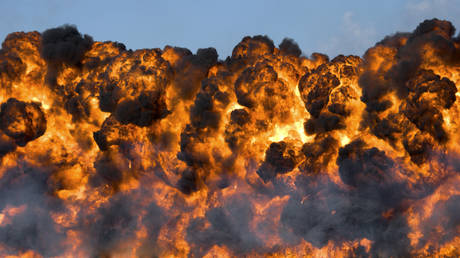
The South China Morning Post has cited researchers as saying the 2kg magnesium hydride device generated a 1,000 degrees Celsius fireball
Chinese researchers have successfully tested a non-nuclear hydrogen bomb that created a sustained fireball, far outperforming traditional explosives, the South China Morning Post has reported.
In an article on Sunday, the newspaper cited the researchers’ study published last month in the Chinese-language Journal of Projectiles, Rockets, Missiles and Guidance. According to the report, a team from the China State Shipbuilding Corporation’s (CSSC) 705 Research Institute — a key player in underwater weapon systems — developed a 2kg (4.4lbs) bomb primarily composed of magnesium hydride, with conventional explosives serving as the catalyst.
In a field test, the device reportedly generated a fireball with temperatures exceeding 1,000 degrees Celsius (1,832 degrees Fahrenheit) that lasted for more than two seconds, which is considerably longer than what an equivalent TNT blast is capable of producing.
In the reaction, magnesium hydride, a compound originally developed as an efficient fuel, rapidly releases stored hydrogen gas, resulting in a sustained inferno.
The novel explosive device’s destructive power thus is said to lie not in its blast pressure, but rather in the ability to generate extreme heat.
The South China Morning Post quoted CSSC research scientist Wang Xuefeng as explaining that its properties also allow for “precise control over blast intensity, easily achieving uniform destruction of targets across vast areas.”
If fully developed, the method could presumably yield a weapon similar to napalm or a thermobaric device – ideal for annihilating defensive structures and armored vehicles.
While the production of magnesium hydride used to be mostly small-scale and rather complicated, China has recently developed a cheaper and safer production method and built a plant capable of producing 150 tons of the compound per year.




